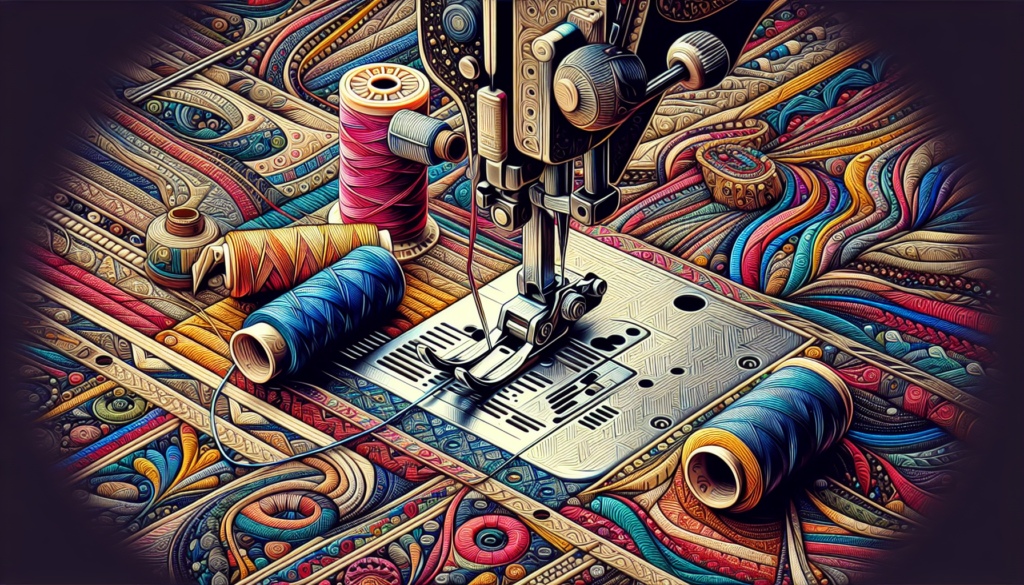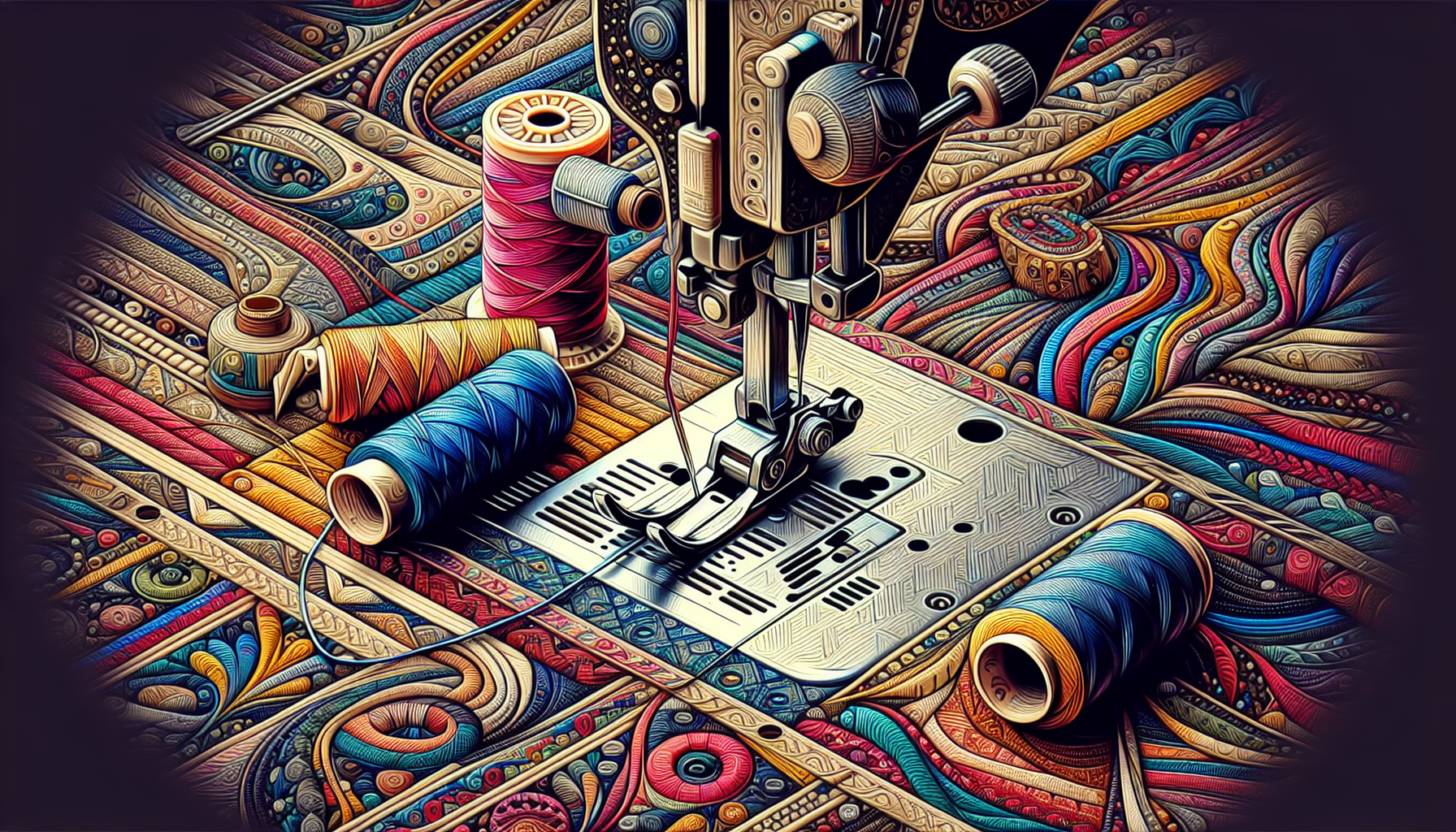Are you tired of seeing your seams unraveling after a few wears? Wondering what machine stitch will provide the strongest and most durable seams? Look no further! In this article, we will explore the world of machine stitches and help you discover the best one for achieving perfectly secure seams every time. Whether you’re a beginner or an experienced seamstress, this is the ultimate guide you’ve been waiting for. So, grab your sewing machine and let’s dive into the wonderful world of stitches!

Straight Stitch
What is a straight stitch?
A straight stitch is the most basic and commonly used machine stitch for sewing seams. It is created by a single, simple line of stitches that go in one direction and are evenly spaced. The straight stitch is typically formed by the up and down movement of the needle, creating a clean and straight line.
Advantages of using a straight stitch
The straight stitch offers several advantages for sewing seams. It is ideal for lightweight fabrics and delicate materials as it produces a clean and professional look. The simplicity of the straight stitch makes it easy to sew accurately and precisely, ensuring that seams are secure and aesthetically pleasing. Additionally, this stitch is suitable for topstitching and finishing edges, giving projects a polished and neat appearance.
Disadvantages of using a straight stitch
While the straight stitch has its benefits, it also has some limitations. One of the main disadvantages is its lack of flexibility. Unlike other stitches, the straight stitch does not stretch, making it unsuitable for sewing stretchy fabrics or garments that require movement and flexibility. Additionally, the straight stitch may not hold up well against heavy fabric or seams that experience stress, as it has a higher risk of breaking or unraveling.
Best use cases for a straight stitch
The straight stitch is best used for lightweight fabrics and woven materials. It is perfect for creating seams in garments that do not require much stretch or movement, such as blouses, dresses, and skirts. The straight stitch is also commonly used for hemming and topstitching, adding a professional finish to various sewing projects. It is a reliable and versatile stitch for basic sewing tasks, providing stability and simplicity to your creations.
Zigzag Stitch
What is a zigzag stitch?
A zigzag stitch is a decorative and functional stitch that creates a zigzag pattern by moving the needle from side to side while stitching. Unlike the straight stitch, the zigzag stitch provides flexibility and stretch, making it suitable for sewing fabrics that require movement and elasticity.
Advantages of using a zigzag stitch
The zigzag stitch offers several advantages in comparison to the straight stitch. It provides elasticity and stretch, making it perfect for sewing stretchy fabrics, knits, and garments that require flexibility. The zigzag motion of the needle reinforces the seams, making them stronger and less likely to break. This stitch is also useful for finishing raw edges, preventing fraying and adding durability to the fabric.
Disadvantages of using a zigzag stitch
While the zigzag stitch has many benefits, it does have a few drawbacks. One of the main disadvantages is its bulkiness. The zigzag pattern can create a thicker and more noticeable seam, which may not be desirable for certain projects where a flat and inconspicuous seam is desired. Additionally, the zigzag stitch requires more time and precision to sew accurately, especially when working with delicate fabrics.
Best use cases for a zigzag stitch
The zigzag stitch is best suited for sewing stretchy fabrics and materials that require elasticity and movement. It is an excellent choice for sewing activewear, swimwear, lingerie, and sportswear, where flexibility and durability are essential. Additionally, the zigzag stitch is often used for appliqué work, attaching trims, and mending fabrics. Its versatility and strength make it a valuable stitch in a variety of sewing projects.
Overlock Stitch
What is an overlock stitch?
An overlock stitch, also known as a serger stitch, is a type of stitch that is created using an overlock machine or serger. This stitch simultaneously trims the fabric edge while sewing, enclosing the raw edge in thread and preventing fraying. The overlock stitch is commonly found in professionally sewn garments and provides a neat and finished look.
Advantages of using an overlock stitch
The overlock stitch offers several advantages for sewing seams. Firstly, it trims and finishes the fabric edge in one simple step, saving time and effort. The enclosed raw edge prevents fraying and enhances the durability of the garment. Additionally, the overlock stitch creates a professional and polished finish, resembling the seams found in ready-to-wear clothing. It is also ideal for sewing stretchy fabrics, as it provides a flexible and secure seam.
Disadvantages of using an overlock stitch
Despite its many benefits, the overlock stitch has a few disadvantages. One of the main drawbacks is the need for a specialized overlock machine or serger to create this stitch. These machines can be expensive and require additional space in your sewing area. Overlock stitches are also not suitable for all sewing projects, especially those that require invisible or flat seams. Additionally, adjusting tension and settings on the overlock machine may require practice and skill.
Best use cases for an overlock stitch
The overlock stitch is best used for finishing raw edges and sewing seams in knit fabrics and stretchy materials. It is commonly used in activewear, lingerie, and casual garments. The enclosed raw edge of the overlock stitch prevents fraying, ensuring that your garments remain neat and durable over time. While an overlock machine is not essential for all sewing projects, it provides a professional finishing touch for those aiming for high-quality results.
(Continued in the next response)

